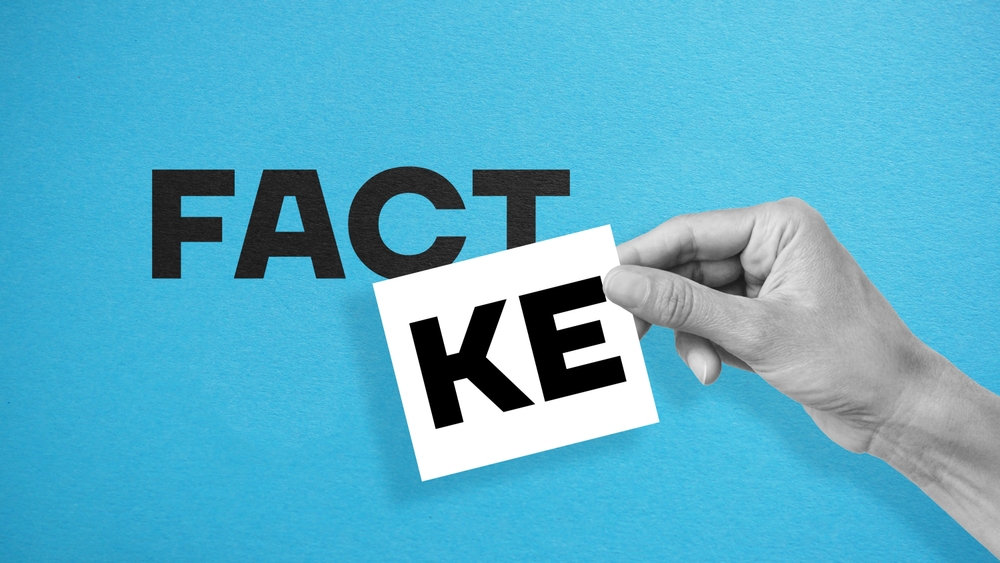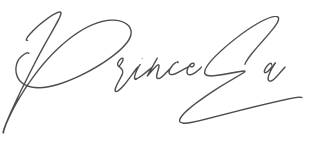US Citizens Are Strikingly Bad At Sorting Facts From Opinions

How often do you find yourself scrolling through your social media feed, reading news headlines, or engaging in a conversation, only to be left wondering, “Is this fact or opinion?” The truth is, in today’s fast-paced, information-saturated world, we’re faced with a constant stream of content—yet many of us struggle to tell the difference between what’s rooted in fact and what’s shaped by personal belief.
This isn’t just a minor issue or an abstract concern—it’s a pressing challenge. It’s a challenge that’s reshaping the way we interact with one another, consume information, and even make decisions. In an age where information is both plentiful and easily manipulated, the inability to discern fact from opinion has become a barrier to informed thinking and responsible citizenship. Whether it’s a heated political debate or a simple online post, the line between what is true and what is merely someone’s interpretation of the truth often gets blurred.
Recent studies, such as the one from the University of Illinois Urbana-Champaign, reveal a startling reality: a large portion of U.S. citizens can’t reliably tell the difference between factual claims and personal opinions. And this gap isn’t just academic—it directly shapes the world we live in. If we can’t distinguish truth from perspective, how can we move forward collectively? It’s not only our responsibility but also within our power to change this reality. By reclaiming our ability to see clearly, we can start building stronger connections, healthier conversations, and a more truthful, understanding society.
The Importance of Sorting Facts from Opinions

Imagine walking into a room where two people are arguing about a current event. One of them passionately declares, “This is an undeniable fact!” while the other counters with, “That’s just your opinion.” But what if they’re both wrong? What if one person is confusing a fact for an opinion, or vice versa? This simple misunderstanding could easily lead to a deadlock, where neither party is willing to listen or engage in a constructive conversation. And the reality is, this happens more often than we realize.
The ability to tell the difference between a fact and an opinion is not just some academic exercise. It’s foundational to how we understand and engage with the world. When we can’t reliably separate facts from opinions, it clouds our judgment, distorts our views, and leaves us vulnerable to manipulation. In politics, for example, this confusion can lead to chaos—where partisan beliefs and ideological biases color our interpretation of events, making it nearly impossible to agree on the most basic facts.
The University of Illinois study mentioned earlier highlighted just how problematic this is. When asked to differentiate between statements of fact and opinion, nearly half of the respondents performed no better than random chance. Let that sink in for a moment—45.7% of people couldn’t reliably determine whether a statement was fact or opinion. This isn’t just about being misinformed—it’s about not even knowing how to identify misinformation when it’s staring us in the face.
Why does this matter so much? It matters because if we can’t agree on what’s true, we’re left in a constant state of uncertainty. How can we have meaningful conversations, solve problems, or make informed decisions if we can’t even agree on the facts? Whether it’s voting on a critical policy issue, debating a social concern, or simply understanding the world around us, sorting fact from opinion is the bedrock of constructive discourse. Without it, we’re simply reacting to personal beliefs and emotional arguments, not engaging with reality. And that’s a dangerous place to be.
In the end, it’s not just about being right—it’s about developing a shared understanding of what’s true, so that we can work together to build a more informed and just society. The difference between fact and opinion is more than a simple distinction. It’s the difference between clarity and confusion, between informed choices and blind reactions. And it’s a distinction we all need to master if we hope to make any progress at all.
The Root Causes: Why Are We So Confused?

If nearly half of us can’t tell the difference between a fact and an opinion, what’s at the heart of this confusion? Why has this simple yet vital distinction become so difficult for so many to grasp? The answer is complex, woven together by several factors that influence how we perceive information. It’s not just about a lack of knowledge; it’s about the deep psychological and social forces at play in today’s world.
Partisan Bias: Seeing Facts Through a Political Lens
One of the most significant contributors to our inability to distinguish between facts and opinions is partisan bias. As political ideologies become increasingly polarized, we find ourselves filtering information through a lens that’s heavily tinted by our beliefs. When a statement aligns with our political side, we’re more likely to accept it as fact. When it doesn’t, we often dismiss it as opinion or, worse, false information. This isn’t new, but it’s becoming more pronounced as emotional polarization intensifies.
Take, for instance, a statement like, “President Barack Obama was born in the United States.” For many, especially those who lean right, this simple fact has been twisted and challenged over the years by the so-called “birther” movement, leading people to treat it as a point of debate, not fact. Meanwhile, those who support Obama would easily accept this as truth, reinforcing the divide. The reality is that facts shouldn’t be up for debate—they are verifiable truths, yet partisan biases continue to shape how we interpret them.
The Media’s Role in Blurring the Line
We also have to look at the role media plays in this confusion. The lines between fact-based reporting and opinion pieces have become dangerously blurred, especially in an era dominated by social media. News outlets, particularly cable news networks, increasingly present not just the facts but a narrative shaped by political or corporate interests. Anchors and commentators often mix analysis with reporting, subtly weaving personal opinions into what is presented as news.
For instance, you may tune into a news program where a reporter presents a set of facts, but the framing, language, and tone make it clear that there’s a certain slant to the story. Similarly, social media platforms thrive on viral content, and opinion-based posts often get far more engagement than factual ones. When opinions masquerade as facts, and when media outlets increasingly blur these lines for entertainment or profit, it becomes incredibly challenging for everyday citizens to discern what’s real from what’s spun.
Cognitive Overload: Too Much Information, Too Little Time

Another reason for our confusion is cognitive overload. We’re bombarded with information every day—on our phones, at work, in social settings—and we’re expected to process it quickly. Our brains can only handle so much at once. When we’re consuming information at such a rapid pace, it’s easy to fall into the trap of assuming something is true simply because it sounds plausible or comes from a familiar source.
Moreover, the sheer volume of information means that many of us don’t take the time to dig deeper into what we’re reading. Headlines are designed to grab attention, often oversimplifying complex issues. In a society that’s moving at breakneck speed, it’s difficult to sift through the noise and take the necessary time to confirm whether something is a fact or merely an opinion.
Psychological Factors: The Comfort of Confirmation Bias
On top of this, there’s the psychological factor of confirmation bias. We naturally seek out information that aligns with our pre-existing beliefs and ignore anything that challenges them. It’s easier for us to believe something that fits our worldview, even if it’s not entirely factual. In some ways, we’re all guilty of it. Whether it’s reading news from a trusted outlet that confirms our beliefs or listening to someone whose opinions echo our own, we tend to stick with what makes us feel comfortable.
This psychological tendency reinforces misinformation and makes it even harder to sort out facts from opinions. We trust information that comes from sources we already agree with, and dismiss information from those we don’t. In doing so, we’re locking ourselves into echo chambers, where facts are distorted or ignored, and opinions are treated as truth.
These root causes—partisan bias, media distortion, cognitive overload, and psychological factors—create a perfect storm for confusion. The question isn’t just why we can’t tell fact from opinion, but how we can overcome these barriers. Recognizing these forces is the first step. The next is developing the tools and the mindset to see through them. But that requires a shift in how we consume information, and, perhaps more importantly, how we see ourselves in relation to the world around us.
The Dangers of Blurring the Line Between Fact and Opinion
Confusing facts with opinions isn’t a minor issue—it has serious consequences. When we fail to distinguish between the two, it creates a breeding ground for misinformation, allowing falsehoods to spread quickly and influence behavior. This makes us more vulnerable to manipulation.
Consider how conspiracy theories often begin as opinions—emotional and unsupported ideas. But when people treat these opinions as facts, they gain traction and begin to shape people’s beliefs. Social media amplifies these falsehoods, enabling them to spread faster than ever before. This isn’t just hypothetical—movements like “Stop the Steal” and misleading claims about public health crises show us the real-world impact of this confusion. Misinformation doesn’t stay contained; it influences decisions, from voting choices to personal health behaviors, with dangerous consequences.
The confusion also erodes our ability to have productive conversations. When every disagreement becomes a battle over “the real facts,” we lose sight of common ground. Instead of engaging in meaningful discourse, we become trapped in echo chambers, reinforcing our own biases and refusing to consider other perspectives. This polarization leads to a society where no one agrees on what the “truth” is, making cooperation and progress difficult.
Look at the current state of politics. Disagreements no longer just center on policies—they are disputes over reality itself. When people dismiss established facts, such as climate change science or election outcomes, it’s no longer about differing views—it’s about conflicting realities. This divides us and weakens trust in the systems that should bring us together.
The impact of this confusion isn’t limited to politics. The COVID-19 pandemic offers a clear example. Misinformation spread rapidly, with people treating opinions about public health measures as facts. This confusion led many to make life-altering decisions based on false beliefs. When opinions about health and safety are mistaken for facts, lives are put at risk.
In short, blurring the lines between fact and opinion isn’t just a misunderstanding—it leads to misinformation, division, and real-world harm. To move forward as a society, we need to restore clarity and trust in the facts we rely on. Only then can we have the meaningful discussions and make the informed decisions necessary to tackle the challenges ahead.
Taking Responsibility: What Can We Do About It?

The first step toward change is recognizing the problem, and now that we understand the gravity of the situation, it’s time to ask: what can we do about it? We, as individuals, hold the power to make a difference. We are the ones consuming the information, engaging in the conversations, and shaping the culture around us. So, how can we begin to take responsibility for the way we process facts and opinions?
Developing Critical Thinking Skills
It starts with us. Each one of us has the responsibility to be a more discerning consumer of information. In a world filled with noise, it’s essential to actively question the information we encounter, regardless of the source. We need to ask ourselves: is this a verifiable fact, or is this someone’s personal perspective? Is there evidence to back this up, or am I simply agreeing because it aligns with my beliefs?
This is where critical thinking comes in. It’s easy to get caught in the rush of information, but if we want to move forward, we need to slow down. Take a moment to pause before sharing, reacting, or believing. Ask questions. Seek out multiple sources. Fact-check. Being responsible with information means developing the ability to think critically, which starts by not accepting things at face value.
The Role of Media Literacy
But it’s not enough to simply expect individuals to figure this out on their own. If we are to truly shift the culture, we must prioritize media literacy in our education systems. Teaching young people to differentiate between facts and opinions should be just as important as teaching them to read and write. We need to equip the next generation with the tools they need to navigate the complex information landscape.
This isn’t just about teaching them to recognize “fake news”—it’s about teaching them how to think critically, evaluate sources, and understand the difference between fact-based reporting and opinion-driven content. With this foundation, they’ll be better prepared to engage with the world in a way that’s grounded in reality, not in distorted perspectives.

Making Fact-Checking a Habit
As individuals, we also need to make fact-checking a part of our daily lives. It’s not enough to rely on one article or one post to inform our opinions. Fact-checking services, like Snopes, PolitiFact, and others, can help us verify the claims we come across. It takes a little more time and effort, but it’s worth it when we consider the stakes. By holding ourselves accountable and seeking out the truth, we make it more difficult for misinformation to take root.
This also means pushing back when we encounter misinformation—whether it’s a casual conversation or a post on social media. But doing so respectfully is key. Instead of just labeling someone’s viewpoint as “wrong,” we can guide them toward reliable sources and ask thought-provoking questions. In doing so, we help foster an environment where truth matters, and where opinions are respected but not mistaken for facts.
Supporting Quality Journalism
Finally, we must support quality journalism. In an age of clickbait headlines and sensationalized stories, it’s easy to get caught up in the hype. But the media landscape is also home to credible sources and dedicated journalists who are committed to presenting the facts. By choosing to support these outlets—whether by subscribing, sharing their content, or simply engaging with their work—we contribute to the preservation of objective, fact-based reporting.
The more we support quality journalism, the more we encourage a shift away from sensationalism and towards content that serves the public good. This collective effort is crucial to creating a media environment where facts are prioritized, and opinions are clearly distinguished from them.
The responsibility lies in our hands. It starts with us as individuals, holding ourselves accountable to think critically, verify what we consume, and engage with others in a respectful, informed manner. But it doesn’t stop there. We must push for changes in the way we educate our children, make fact-checking a daily habit, and support the outlets that prioritize the truth. When we begin to make these changes collectively, we can start to turn the tide on misinformation and work towards a society where facts are recognized for what they are, and opinions are respected for what they are not.
Reclaiming the Truth

The confusion between fact and opinion has led us to a dangerous place—a place where misinformation spreads unchecked, trust in institutions erodes, and meaningful conversation becomes nearly impossible. But we have the power to change this. It starts with each of us taking personal responsibility to question the information we encounter, verifying it, and refusing to let biases cloud our judgment. By practicing critical thinking and engaging with reliable sources, we can start to rebuild a society that values truth over distortion.
This isn’t just a personal journey—it’s a collective one. Media literacy education and supporting quality journalism are vital steps toward creating a generation equipped to distinguish fact from opinion. When we support outlets that prioritize truth and educate our communities on how to critically evaluate information, we set the stage for a more informed, responsible society.
The responsibility lies with us. If we are to move forward, we must commit to recognizing facts for what they are and treating opinions with the respect they deserve—without mistaking them for truth. This is how we begin to mend the fractures in our society and reclaim a future grounded in understanding, clarity, and collective progress.
Featured Image Source: Shutterstock
Sources:
- Mettler, M., & Mondak, J. J. (2024). Fact-opinion differentiation. Harvard Kennedy School (HKS) Misinformation Review. https://doi.org/10.37016/mr-2020-136
- Mitchell, A., & Mitchell, A. (2024, May 3). Distinguishing between factual and opinion statements in the news. Pew Research Center. https://www.pewresearch.org/journalism/2018/06/18/distinguishing-between-factual-and-opinion-statements-in-the-news/
- Conference, C. (2025, January 30). The First-Ever 8-Country Holocaust Knowledge and Awareness Index shows growing gap in knowledge about the Holocaust, especially in young adults – claims Conference. Claims Conference. https://www.claimscon.org/country-survey/
Loading...






